This past January, I attended a workshop run by Daisaku Nomoto. As I was about to start plucking needles on a young pine, Nomoto recommended I leave some of the oldest needles in place. I asked why, and he suggested the following technique.
Many branches on the young pine below have grown vigorously. Even after decandling the tree last spring, the summer shoots grew too long for me to incorporate them into the final design. I needed a way to replace these vigorous shoots with more refined growth.

19 year-old black pine
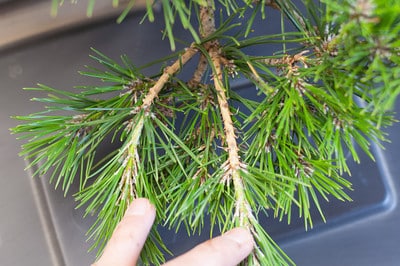
Long branches
Instead of removing the spring growth according to standard decandling techniques, I removed last year’s growth too.
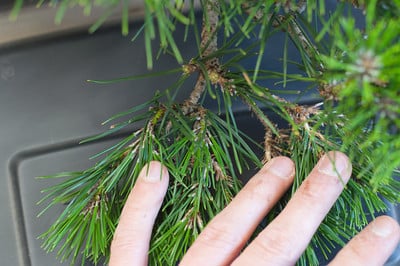
Long shoots removed
Here’s where the old needles come into play. Second-year needles will keep sap flowing to the branch where I want new buds to appear.
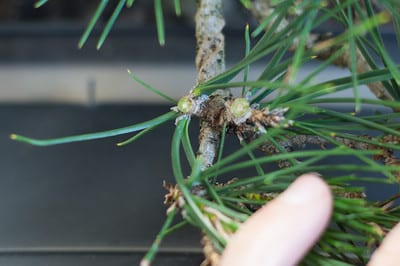
Second year needles
Here’s a closer look at the branches I removed. The green section developed this spring – the brown section developed last summer.
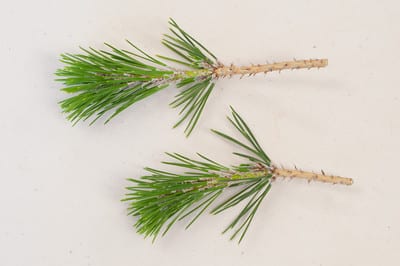
12 months of new growth
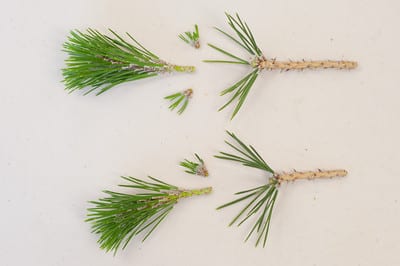
Spring shoots separated from last summer’s growth
I removed as many long branches as possible, and decandled the rest. This resulted in a much smaller profile.
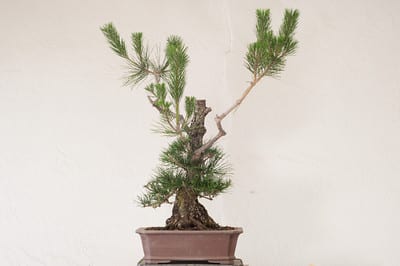
After cutback-decandling
I’m curious to see how the tree responds – and I’ll be sure to share the results.
Subscribe to Bonsai Tonight
New Posts Delivered Every Tuesday and Friday
Mac says
Jonas, Thank you for publishing this. It’s another technique to add to black pine lore. I have never seen anyone suggest cutting back that far in any publication and it could prove quite useful.
Wonder if it would work on White Pine as well?
Please do let all of us know how this comes out. I have a pine I may try it on also.
Sam Ogranaja says
Thanks Jonas for posting this. Very enlightening. I have a strong shohin black pine that is due for repotting next year but has been growing very strong this year. I think I will perform this technique on it this weekend and see how it responds. I think it will do quite well.
When do you start fertilizing again after this technique? Last year, I started fertilizing about 30 days after decandling, and the new needles were quite long. The tree is not show ready yet, so it’s no big deal.
Have a great weekend!!!
Sam
Jonas Dupuich says
Hi Sam – I usually wait about a month before fertilizing strong trees after decandling. I keep some fertilizer on the weaker trees and begin increasing the amount of food they get after the first month.
Dan says
Very useful post! Thanks!
Seán Coleman says
Great information. Thanks for posting. I am just starting to work with pines and truly appreciate all the info I can get.
Marty says
Good information. I plan to apply a variant to some Scots pine this year after reading your post. My feeling is that we tend to apply finishing techniques too soon to trees that are in development. This looks like a great development technique – get really strong growth over 2 years and then cut back to force all of the sap into interior prebuds.